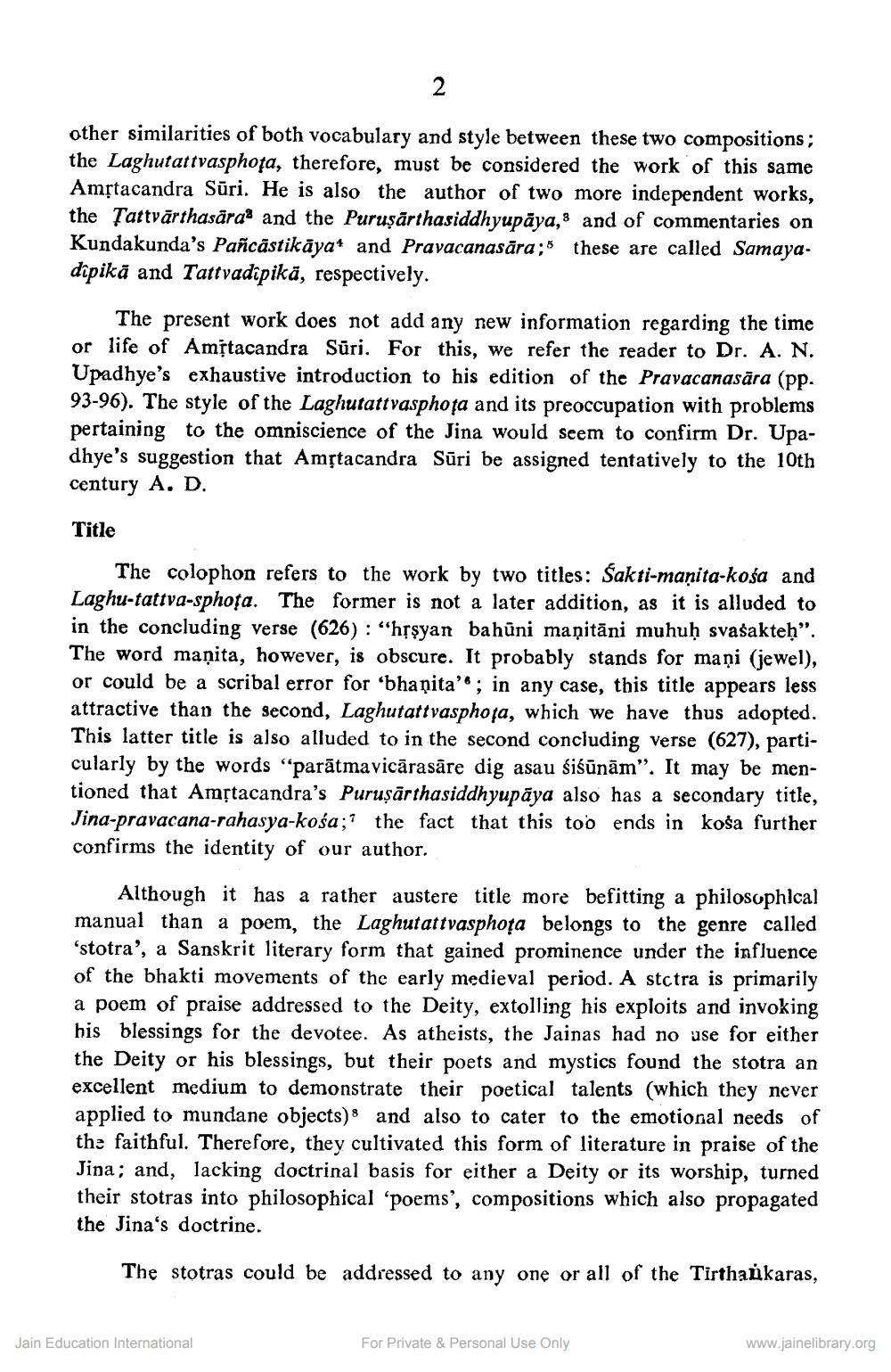________________
other similarities of both vocabulary and style between these two compositions ; the Laghutattvasphofa, therefore, must be considered the work of this same Amrtacandra Sūri. He is also the author of two more independent works, the Tattvārthasara and the Puruşārthasiddhyupāya, and of commentaries on Kundakunda's Pañcāstikāyat and Pravacanasāra;% these are called Samaya. dipikā and Tattvadipikā, respectively.
The present work does not add any new information regarding the time or life of Amitacandra Sūri. For this, we refer the reader to D Upadhye's exhaustive introduction to his edition of the Pravacanasāra (pp. 93-96). The style of the Laghutattvasphofa and its preoccupation with problems pertaining to the omniscience of the Jina would seem to confirm Dr. Upadhye's suggestion that Amstacandra Sūri be assigned tentatively to the 10th century A. D.
Title
The colophon refers to the work by two titles: Śakti-maņita-kośa and Laghu-tattva-sphoța. The former is not a later addition, as it is alluded to in the concluding verse (626) : "hşşyan bahūni maņitāni muhuḥ svašakteḥ”. The word maņita, however, is obscure. It probably stands for maņi (jewel), or could be a scribal error for 'bhaạita'® ; in any case, this title appears less attractive than the second, Laghutattvasphofa, which we have thus adopted. This latter title is also alluded to in the second concluding verse (627), particularly by the words "parātmavicārasāre dig asau śiśūnām". It may be mentioned that Amstacandra's Puruşārthasiddhyupāya also has a secondary title, Jina-pravacana-rahasya-kośa;7 the fact that this too ends in koša further confirms the identity of our author.
Although it has a rather austere title more befitting a philosophical manual than a poem, the Laghutattvasphoța belongs to the genre called 'stotra', a Sanskrit literary form that gained prominence under the influence of the bhakti movements of the early medieval period. A stctra is primarily a poem of praise addressed to the Deity, extolling his exploits and invoking his blessings for the devotee. As atheists, the Jainas had no use for either the Deity or his blessings, but their poets and mystics found the stotra an excellent medium to demonstrate their poetical talents (which they never applied to mundane objects) and also to cater to the emotional needs of the faithful. Therefore, they cultivated this form of literature in praise of the Jina; and, lacking doctrinal basis for either a Deity or its worship, turned their stotras into philosophical ‘poems', compositions which also propagated the Jina's doctrine.
The stotras could be addressed to any one or all of the Tirthańkaras,
Jain Education International
For Private & Personal Use Only
www.jainelibrary.org




